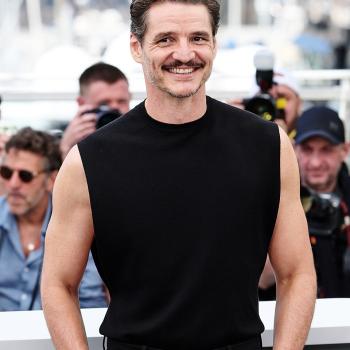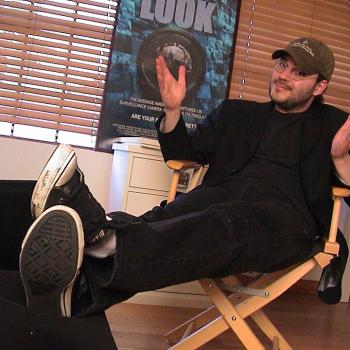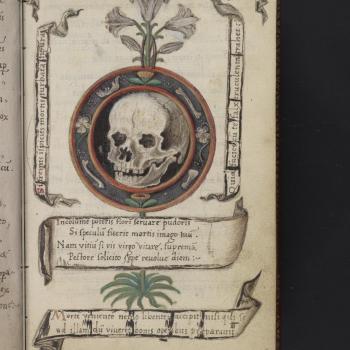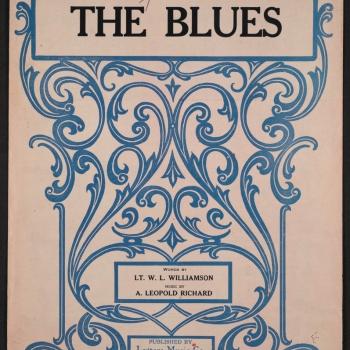
I’m 28 and I’m already nostalgic for the earliest years of my life. On the one hand, this seems an obvious effect of our age of accelerated change—the Trump years (not all that long ago after all) feel like a blur, and the internet trudges on, introducing each micro-generation to a new bevy of cultural symbols and mediations. Facebook didn’t achieve popularity until I was nearly halfway through high school. Internet dating went from strange and pitiful to de rigueur before I could graduate college. On the other hand, it’s all quite natural. The title of Happy Days (1974-1984) says it all. Who could forget the veritable cottage industry of 70s nostalgia in the late 90s and early 2000s—from That ‘70s Show (1998-2006) to Dick (1999) and Boogie Nights (1997)? Maybe, in my case, nature is just taking its course.
What draws me back to the 90s in particular (aside from the false Eden of a world teetering on the brink of internet access, aware of computers, but nowhere near fully converted) is the intersection of normalcy and insanity, a 50s redux. The bellowing suits, the shoulder pads, the hair that’s (by our stands) big, but tame and shapely (unlike the mops of the 80s)—it all feels like the fundament on which all fashion is built, as simple as clothing can get. In Seinfeld (1989-1998) no one goes beyond jeans, slacks, blazers, sweaters, and sneakers. The end of history also seemed to bring the end of fashion, a profoundly unsexy world of utilitarian basicness. After living through the fashion tragedies of the aughts and 2010s, the play-it-safe quality of 90 fashion warms the heart.
That banality, however, is precisely what makes the 90s such a vital time for weird TV and cinema. From the surreal melodrama of Twin Peaks (1990-1991, 2017) to the off-kilter uncanniness of Edward Scissorhands (1990) and Pleasantville (1998), as well as the horrific suburban depravity of Parents (1989) and Jack Frost (1997), the 90s were fertile ground for visual alienation. The psychic dissonance created by living in the end times meant horror in the mundane, a kind of golden age of expressionistic filmmaking embedded in “regular” life and locales.
It is, in this light, that we must approach Dario Argento’s bizarre (and at times difficult to follow) giallo, Trauma (1993). His only fully American-backed feature, it’s often regarded as a weak effort by a director caught between his traditional glamor and the more-tasteful mainstream US market. In certain respects, this is true—his usual collaborators, the band Goblin, are absent, replaced by Pino Donaggio, who gives us a rip-off Danny Elfman soundtrack the producers assumed would be more appealing to American audiences. But the giallo (a style of pulp novel turned film that combines elements of mystery, detective story, psychodrama, slasher, and sexploitation, which experienced immense fame in Italy and Spain in the 1970s) was made for the 90s, an era when repression and normality intersected to great effect. His “failure,” in other words, is a triumph of the time in which it was made (and isn’t half bad to watch now either)
Trauma tracks a man named David Parsons (Christopher Rydell) who prevents a 16-year-old Romanian girl named Aura Patrescu (Asia Argento) from committing suicide and then falls in love with her. Aura has just escaped from a clinic run by Dr. Judd (Frederic Forrest), where she is undergoing treatment for bulimia (which the movie inexplicably keeps calling anorexia). Just as these two meet, her parents (one of whom is a medium) are murdered by a serial killer called the Headhunter, who (in good giallo fashion) kills with a garroting machine (presumably made up for the movie) and (in good giallo fashion again) only strikes when it’s raining. Aura moves in with David as the number of murders accelerates, targeting a group of doctors and nurses involved in some unspeakable (you guessed it) trauma from years prior. Our two protagonists have to try and figure out who the killer is before it’s too late. I won’t reveal who the murderer is here. If you’ve seen a lot of gialli, you know the red herrings, the gender play, the trench coats, and black gloves—that’s all on display here.
But anyone who knows Argento knows that the plot is not the point. No. You watch one of his films for the camerawork, the lighting, the blend of the glamorous and sadistic. His camera is exceedingly mobile in Trauma and the whole thing is lit like a Douglas Sirk melodrama crossed with John Carpenter’s Halloween (1978). It’s always foggy, with the artificial-looking environments constantly drenched in the fake, hurricane rain of classic Hollywood. The whole thing feels like a dream from another time operating based on some foreign (repressed?) logic and even morality (this is, after all, a movie where a grown man unproblematically falls in love with a mentally ill 16-year-old, played by the director’s daughter, whom he needlessly shoots topless on one occasion). Even the titular trauma seems murky. Is it some reference to Ceausescu’s anti-birth control programs, which created large numbers of orphans and malnourished children (Aura is, after all, the right age and explicitly Romanian)? Is it a reference to Argento’s stepdaughter Anna, who did have an eating disorder and who we see dancing to reggae in the credits? Or are we dealing with some broader notion of trauma, one in which every action is the result of a cascade of difficult life experiences, one in which the only commonality shared by human beings is woundedness?
I don’t know, and frankly I’m not sure that’s the point. In an age where “trauma” is a deadly serious term, a concept often to be used in media as little more than a grim psych101 characterization device, Argento’s goofy, over-the-top giallo is refreshing. Yes, it’s unbalanced and convoluted. Yes, it’s got more implausible twists than a soap opera. But that’s okay. It takes us back to a time before algorithmically generated plots and dire self-seriousness. It reminds us of the way in which placid normality and utter depravity are bound up together. And it looks damn good while it does it. Couldn’t we use a little more style in our lives anyway?












